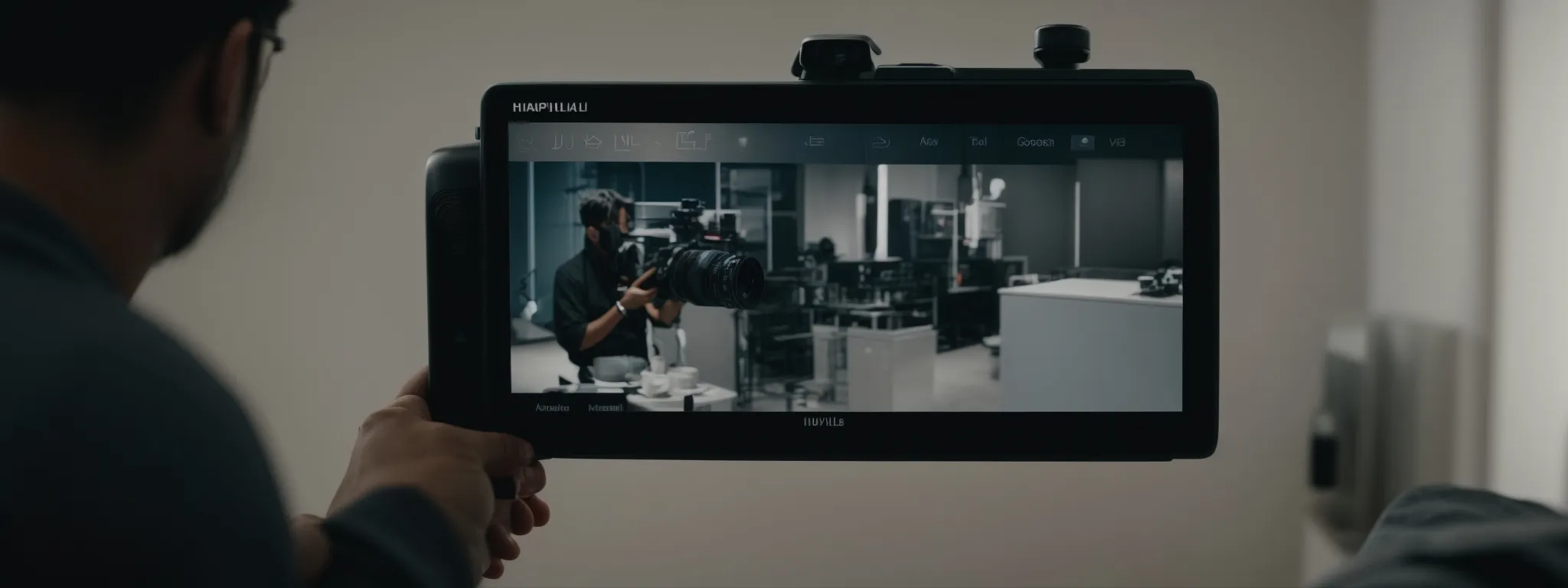Digital Marketing Strategies for New Products
Effective Digital Marketing Strategies for Launching New Products In the fast-paced realm of digital marketing, launching a new product demands not only innovation but also a meticulously […]
Effective Digital Marketing Strategies for Launching New Products
In the fast-paced realm of digital marketing, launching a new product demands not only innovation but also a meticulously crafted strategy that captures and sustains public interest.
From the initial tease to the grand unveiling, each step must be engineered to build momentum and generate buzz.
Excelling in this venture requires a blend of traditional and novel marketing tactics, all tuned to the digital heartbeat of today’s market.
The arsenal available to marketers is vast, encompassing everything from search engine optimization and influencer partnerships to targeted email campaigns and attention-grabbing social media strategies.
Keep reading to uncover how these digital marketing solutions can turn your product launch into a resounding success.
Key Takeaways
- A Successful Digital Marketing Strategy for Product Launches Includes Creating Captivating Content Aligned With the Buyer’s Journey
- Precision in on-Page SEO and Robust Link-Building Strategies Are Vital for Maximizing a Product’s Visibility in Search Engine Rankings
- Social Media Platforms Are Crucial for Increasing Product Visibility, Engagement, and Establishing a Two-Way Conversation With the Target Audience
- Email Marketing Remains a Powerful Tool for Personalized Communication and Building Anticipation During Product Launches
- Influencer Marketing Can Enhance a Product’s Credibility and Reach Through Trusted Endorsements and Co-Created Content
Crafting a Launch-Focused Content Marketing Plan

The digital climate is ever-evolving, and with it, the canvas of content marketing continues to expand.
Launching a new product requires a meticulous strategy that goes beyond mere exposure; it requires a campaign that captivates and converts.
This entails identifying content that resonates with your audience, aligning this content with the intricacies of the buyer’s journey, strategically scheduling its rollout to create a crescendo of interest, and weaving a compelling narrative around the product.
Within these tactics lies the potential to not only build awareness but also foster a deep connection with the target market, ultimately steering them towards a decisive action.
Identifying Engaging Content Types for Product Launch
In the landscape of digital marketing, the selection of content types tailored to a product launch can be pivotal in determining the success of the campaign. Marketers must carefully choose content that showcases the unique value proposition of their product, ensuring that each piece is designed to engage and inform the prospective audience, ultimately guiding them through the various stages of the launch cycle.
Through thorough market research and an understanding of their buyer persona, professionals are adept at curating content that might involve dynamic video marketing snippets, persuasive copywriting on landing pages, or informative blog posts that illuminate the intricacies and advantages of the new offering. It is essential that this content not only captures the essence of the product but also aligns seamlessly with the narrative that the marketing strategy seeks to construct.
Aligning Content With the Buyer’s Journey
Success in introducing a new product hinges on the understanding that customer engagement evolves during the journey from awareness to decision. Marketers must finesse the timing and relevance of content to address each phase, using it as a beacon to guide potential customers deeper into the funnel, piquing their interest at the outset and escalating it to consideration and, ultimately, commitment.
Effective digital marketing strategies often include crafting narratives that echo the queries and concerns of the audience at every step. A savvy marketing manager will align multi-faceted content, ensuring that initial educational materials transition into more detailed explorations of features and benefits that culminate in compelling calls-to-action, tailored to coincide with the buyer’s readiness to convert.
Scheduling Content Release for Maximum Impact
Determining the optimal timing for content release is a cornerstone of sustaining public interest throughout a product launch. A marketing campaign gains momentum when each piece of content—be it a teaser of the upcoming product, an insightful feature article, or a captivating promotional video—is timed with precision to maintain a continual engagement with the audience.
A reveal that escalates with strategic timing captures the audience’s attention, ensuring that important messages do not simply ride the waves of the internet momentarily but rather crest at just the right moment. Expert Digital Marketers craft each release to build on the last, culminating in a well-orchestrated sequence that aims to maximize the visibility and impact of the launch in alignment with the company’s business objectives and marketing goals.
Integrating Storytelling to Build Product Awareness
The art of storytelling within digital marketing is not simply about narrating a sequence of events; it’s about constructing a narrative that forges an emotional link with the consumer. Storytelling transforms a typical marketing message into a compelling tale that positions the product as a key character, enhancing the potential customer’s journey from curiosity to advocacy.
A strategically woven story does more than inform; it embeds the product within the consumer’s world, making it an indispensable solution to a problem they’re intimately familiar with. By detailing scenarios where the product becomes a hero, the brand builds a powerful form of awareness that’s both relatable and memorable:
- Introduce the protagonist: the consumer, facing a common challenge.
- Present the product as a newfound ally, equipped with unique features to tackle the challenge.
- Depict a triumphant resolution, where the product not only resolves the challenge but also enhances the consumer’s life.
Optimizing Product Launch With SEO

Launch strategies in the realm of digital marketing must harness the power of Search Engine Optimization (SEO) to ensure the new product garners the attention it merits.
High-impact SEO starts with meticulous keyword research, laying the groundwork for the new product to hit the ground running in the digital space.
Precision in on-page SEO practices for product pages and supporting content is critical, as it primes the launch-related material to reach its intended audience effectively.
Robust link-building strategies are employed to strengthen the product’s online presence, making it more visible to its target market.
Moreover, vigilant monitoring of SEO performance provides the feedback necessary to refine tactics, ensuring that the SEO strategy for the product launch is not merely executed but is also continuously optimized for maximum reach and impact.
In essence, weaving SEO into the fabric of a product launch strategy is paramount to illuminate the path for potential customers to discover and embrace the new product.
Researching High-Impact Keywords for the New Product
Embarking on keyword analysis for a new product forms the backbone of an incisive SEO strategy. Marketing experts utilize advanced tools like SearchAtlas SEO software to uncover search terms pivotal for reaching an ideal customer base. This crucial step ensures that every piece of launch-related content is optimized for high search visibility, aligning with the audience’s intent and the product’s distinctive features.
The confluence of market research and SEO tools such as SearchAtlas can reveal not only high-traffic keywords but also niche phrases that competitors might overlook. A brand’s digital marketing team concentrates on these keywords to craft a narrative that resonates with search engines and humans alike, establishing a strong foundation for the product’s digital footprint and enhancing the likelihood of conversion at each touchpoint in the customer’s journey.
On-Page SEO for Product Pages and Launch-Related Content
As the cornerstone of an effective digital marketing campaign, on-page SEO for product pages and related content must be executed with precision. Digital marketers leverage SearchAtlas SEO software to ensure that meta tags, headers, and alt attributes are meticulously optimized to enhance discoverability within search engines, thereby increasing organic traffic to these critical pages.
Striking the right balance between keyword density and natural language is crucial for the indexation and ranking of launch-related content. Engaging and SEO-rich product descriptions, bolstered by strategic keyword placement and content optimization techniques, help elevate the new product’s visibility and draw the target audience closer to a conversion point.
Link-Building Strategies to Boost Product Visibility
Link-building remains a linchpin in elevating the visibility of a new product in the search engine landscape. Powerful backlinks signal to search engines the credibility and relevance of a product page, propelling it upward in rankings and thus, sharpening its visibility to an actively searching audience.
LinkGraph’s bespoke link-building services are designed to manifest authoritative links that are not only industry-relevant but also meaningful to the target audience. The strategy involves securing placements in digital PR services and across strategic marketing channels to create a network of quality backlinks:
- Commencing with a comprehensive analysis of the brand’s niche to identify linkable assets.
- Engaging with established platforms for content syndication that bolster link equity.
- Executing white label link-building to maintain brand coherence across all marketing tactics.
Monitoring SEO Performance and Adjusting Tactics
Monitoring the performance of a product launch’s SEO strategy is a Vital Step in ensuring the effectiveness of digital marketing efforts. Through the use of advanced analytics provided by platforms such as LinkGraph and SearchAtlas, marketing professionals can garner insights into traffic patterns, keyword rankings, and user engagement metrics. This practice allows for the fine-tuning of tactics in real time, ensuring that the marketing activities remain agile and responsive to the evolving needs and behaviors of the target market:
- Scrutinizing metrics to assess the efficacy of keyword choices and on-page optimization efforts.
- Adjusting content and link-building strategies based on data-driven insights to enhance reach and conversion rates.
- Continually refining the campaign to navigate algorithm updates and shifts in consumer search behavior.
Adapting SEO strategies based on the outcomes of performance monitoring facilitates informed decision-making and the optimal allocation of digital marketing resources. This ongoing process keeps the product’s online presence attuned to the demands of search engine algorithms, securing a competitive edge in the crowded digital marketplace. Brands achieve more than mere visibility; they attain a resonance with their audience that drives towards meaningful interaction and conversion.
Leveraging Social Media Buzz for Product Launch

In a world where virtual interactions can make or break a product launch, the vibrancy of a robust social media marketing campaign cannot be overstated.
As businesses gear up to introduce their latest offerings, the vast landscape of social media presents a dynamic and interactive platform for captivating the attention of their target audience.
The key to leveraging this buzz lies in selecting the right social media platforms tailored to the audience, crafting content that encourages sharing and engagement, strategically employing hashtags to foster brand-related conversations, and maintaining active engagement with followers.
Each of these steps forms a crucial part of the digital marketing mosaic, instrumental in amplifying the visibility and anticipation of a new product in the digital sphere.
Selecting the Right Platforms for Your Product Audience
Selecting the ideal social media platforms for a product launch is a critical step in a company’s digital marketing strategy. The key to success is identifying where the target audience spends their time and what type of content they consume, ensuring that every post, tweet, or update reaches the most receptive and responsive demographic.
A strategic approach involves analyzing the demographics and behavioral patterns associated with different social media channels to align with the product’s prospective user base. Professionals must prioritize platforms that not only align with the demographic characteristics of their target market but also complement the nature and messaging of the product, thereby maximizing engagement and fostering favorable audience interactions.
Crafting Shareable Social Media Content
Shareable content is the currency of social media, and crafting it requires an acute understanding of the elements that encourage user interaction and dissemination. For a product launch, this means developing imagery, videos, and text that tap into the viewer’s emotions and invite participation through likes, shares, and comments, with each engagement optimizing the product’s exposure across social platforms.
To truly resonate with an audience, content must be not only visually appealing but also reflective of the brand’s values and the product’s core benefits. Digital marketing professionals strategically infuse such content with a mix of relevance, utility, and a hint of allure, setting the stage for it to become viral, thus multiplying the product’s visibility within the digital realm without the need for direct promotion.
Implementing a Hashtag Campaign to Track Conversations
Initiating a well-crafted hashtag campaign is a strategic move for brands seeking to drive conversations around their new product launches on social media. By integrating specific, memorable hashtags into marketing materials, brands can not only categorize content but also ignite a wider discourse in digital communities, providing a gateway for engagement and feedback.
Marketers adeptly deploy these targeted hashtags across social media platforms, offering a seamless method for tracking user-generated content and measuring the social buzz surrounding a launch. It creates an interactive hub for consumers to share experiences and for brands to monitor the campaign’s reach and impact, harnessing real-time insights into audience sentiment.
Engaging With Followers and Responding to Queries
Interacting proactively with followers on social media is an indispensable piece of the digital marketing puzzle when launching new products. By promptly responding to queries and participating in conversations, brands manifest a level of customer service that resonates with consumers and fosters a tangible human connection, thus bolstering customer loyalty.
Maintaining a diligent presence on social media channels enables marketers to address any concerns and collect valuable feedback, which may be pivotal to the product’s iterative development post-launch. This engagement demonstrates a commitment to customer satisfaction that extends beyond the transaction, reinforcing the brand’s reputation for attentive service.
- Interact with followers to nurture a connection and build community around the product.
- Address queries and feedback efficiently to enhance customer experience and trust.
- Utilize insights from social interactions to refine the product and marketing strategies.
Utilizing Email Marketing to Tease and Reveal

Amid the cacophony of digital channels, email marketing endures as a cornerstone for directly reaching and engaging a curated audience during a product launch.
The success of introducing a new offering hinges not only on the anticipation it generates but also on the tailored communication that bridges the brand with its target demographic.
In meticulously crafting an email marketing campaign, brands orchestrate a teaser series that stirs intrigue, segments recipients for a touch of personalization, and designs email creatives that draw eyes to the launch’s visual story.
The evaluation of open rates and click-through rates (CTR) then becomes the compass by which the email strategy is continuously refined, ensuring that each message is a step toward achieving the desired impact on the audience, driving them towards the ultimate reveal.
Building an Anticipation Series for Your Email List
To galvanize interest around a new product, crafting an anticipation series for an email list is a deft approach that keeps a prospective audience engaged and eager. This series strategically delivers a crescendo of curated messages to subscribers, tantalizing them with sneak peeks and exclusive insights that heighten their curiosity and anticipation.
Marketers adept at wielding this marketing technique understand the power of suspense and strategically timed revelations. Each email serves as a narrative chapter that unfolds progressively, ensuring that the product’s unveil feels like a climactic event, maintaining subscribers’ engagement throughout the buildup to the launch.
Segmenting Your Email Audience for Personalized Messaging
Segmenting an email audience serves as an essential lever in personalizing communications during a product launch. By categorizing recipients based on demographics, behaviors, or previous interactions with the brand, marketers tailor messages that resonate more deeply with individuals, enhancing the relevance of their email marketing efforts.
Implementing personalized messaging throughout an email campaign ensures that each recipient feels acknowledged on a singular level, a strategy known to significantly Boost Open and Click-Through Rates. It transforms a blanket marketing tactic into targeted appeals that align closely with the unique interests and needs of different segments of the target audience.
Designing Impactful Email Visuals for the Product Launch
Compelling visuals are the cornerstone of an effective email marketing campaign for product launches. They have the ability to arrest attention, explain benefits, and enhance the overall narrative that a text-only approach can seldom achieve.
| Email Component | Visual Significance | Impact on Recipient |
|---|---|---|
| Product Images | Conveys the product’s appearance and features at a glance. | Boosts product familiarity and shapes first impressions. |
| Color Scheme | Emotionally aligns the visual theme with brand messaging. | Subconsciously influences how the recipient perceives the brand and product. |
| Typography | Ensures readability while adding character to the text. | Enhances engagement and readability, leading to higher retention of information. |
| Infographics | Distills complex information into digestible visual snippets. | Assists in understanding the product’s value propositions more clearly. |
Marketers are tasked with formulating email creatives that can not only educate but also evoke an emotional response from the audience. Using a harmonious blend of informative infographics, eye-catching typography, and a judicious choice of color palettes, digital marketing teams can evoke the product story more vividly and encourage readers to move closer to conversion.
Analyzing Open Rates and CTR to Refine Email Strategy
An adept marketing manager treats engagement metrics such as open rates and click-through rates (CTR) as essential indicators of an email campaign’s performance. Astute analysis of these metrics provides actionable insights, enabling a swift recalibration of email content, timing, and segmentation strategies for enhanced efficacy throughout the product launch phase.
With intent focus, professionals in digital marketing refine their email strategies by leveraging performance metrics to heighten relevance and engagement. They understand that optimizing these metrics correlates directly with increased consumer interaction, driving the momentum needed for a successful new product introduction.
Investing in Paid Advertising for Immediate Reach

As companies strive to break through the noise and secure a foothold in the competitive marketplace, investing in paid advertising emerges as a strategic pillar of an effective digital marketing strategy for product launches.
The immediacy and scalability of paid campaigns provide an unparalleled avenue to elevate a product’s profile to its target audience.
By determining the best ad platforms tailor-made for their product, crafting compelling ad copy and visuals that resonate, rigorously A/B testing ads to refine campaign performance, and judiciously setting and adjusting advertising budgets, brands can focus their resources to secure optimal reach and impact at the forefront of their launch initiatives.
Determining the Best Ad Platforms for Your Product
Determining the best ad platforms for a product is a critical decision that hinges on understanding where the target audience is most likely to engage with paid content. An expert marketer considers factors like the platform’s user demographics, advertising formats available, and the product’s niche to select platforms that promise the highest return on investment.
By selecting the ideal advertising platforms, brands position their products in front of the right audience at the right time, leading to increased campaign effectiveness. Deploying pay-per-click strategies and Amazon PPC ads through careful platform choice allows for precise targeting, ensuring that marketing spend is converted into measurable customer engagement and conversions.
Creating Compelling Ad Copy and Visuals
Crafting compelling ad copy and visuals is an art form pivotal to capturing the attention of the target market during a product launch. Ad copy must succinctly communicate the product’s unique selling proposition, while visuals need to be striking enough to stop the audience mid-scroll, ensuring both elements work in tandem to elevate the campaign narrative and convert viewer interest into action.
Successful digital marketing campaigns harness the synergy between captivating ad copy and immersive visuals to engage and emotionally connect with potential customers. This cohesive storytelling approach not only reflects the product’s brand identity but also serves to differentiate it within a saturated marketplace, driving the advertising strategy toward measurable success.
A/B Testing Ads for Launch Campaign Optimization
Within the sphere of digital marketing, A/B testing stands as a keystone in optimizing launch campaigns. It enables marketers to go beyond hunches and gut feelings and make data-driven decisions about which ad variations perform the best, ensuring that resources are allocated effectively and the messaging resonates with the target audience.
This precision-focused approach not only hones the advertising strategy but significantly improves return on investment. By pitting different iterations of ad copy, visuals, and calls to action against each other, digital marketing teams pinpoint the formula that propels conversion rates and elevates campaign success:
- Experiment with various headlines and descriptions to discern which engages consumers the most effectively.
- Test different visual elements to determine what captures attention and prompts desirable consumer responses.
- Analyze calls to action to establish the most compelling language that drives user engagement.
Such iterative testing does more than refine an existing campaign; it offers actionable insights that can shape future advertising efforts. Through consistent application of A/B testing methodologies, digital marketers build a robust framework of empirical knowledge to support the success of subsequent launches.
Setting and Adjusting Budgets for Targeted Ad Spend
As digital marketing professionals navigate the intricacies of launching a new product, precise budget allocation for targeted ad spending is paramount. It is essential for marketing teams to scrutinize initial engagements and conversion metrics, thereby enabling them to dynamically adjust budget flows toward the most profitable channels and demographic segments.
The fluidity of digital advertising demands constant evaluation of spend efficiency, wherein teams analyze ongoing campaign performance against set Key Performance Indicators (KPIs). Responsively scaling up or down on ad spend in real-time ensures marketing dollars are invested where they yield the highest ROI, aligning with evolving business goals and market conditions.
Engaging Influencers to Enhance Product Credibility

In the tapestry of contemporary digital marketing tactics, influencer marketing stands out as a paramount strategy for amplifying the credibility of a new product launch.
The endorsement of respected influencers can act as a powerful catalyst, infusing a campaign with authenticity and trustworthiness that resonates with a broader audience.
Businesses focused on navigating the complexities of a product debut must be adept in pinpointing influencers whose ethos and audience align with their brand identity, strategically forging partnerships to co-create bespoke, launch-centric content.
The meticulous crafting of an influencer outreach initiative, accompanied by vigilant tracking of campaign analytics, forms an indispensable component of a holistic digital marketing plan, ensuring that every collaboration is purposefully directed towards augmenting the brand’s narrative and solidifying its market position.
Identifying Influencers Who Resonate With Your Brand
Identifying influencers whose brand and audience complement your own is a nuanced endeavor that demands an incisive understanding of both your brand’s identity and the influencer’s reach within the industry. The alignment of values and the potential for credible advocacy are paramount, as they serve as the bedrock for meaningful engagements with both the influencer’s followers and your prospective customers.
Selecting the right influencer involves a vetting process that evaluates their content, the resonance of their voice in the community, and the authenticity of their interactions with their audience:
| Criteria | Influencer Qualities | Brand Compatibility |
|---|---|---|
| Brand Values | Personal ethos and messaging | Reflects brand philosophy and mission |
| Audience Engagement | Quality of interactions with followers | Mirrors the brand’s target market engagement strategy |
| Content Style | Unique voice and content approach | Complements the brand’s content marketing strategy |
Developing an Influencer Outreach Plan
Creating an influencer outreach plan requires a strategic approach that encompasses identifying influencers who have the trust of your target audience and crafting a collaborative blueprint that aligns with your brand’s launch goals. It involves reaching out with a tailored pitch that reflects an understanding of the influencer’s content ethos while presenting the mutually beneficial opportunity for elevating the new product’s profile.
Execution of the influencer outreach plan calls for clear communication of expectations, deliverables, and timelines to ensure a cohesive effort that amplifies the product launch. As the campaign unfolds, transparent dialogue and ongoing support are key to nurturing the partnership, ensuring that the influencer remains engaged and the messaging stays authentic and impactful.
Collaborating on Launch-Specific Content
Forge strong partnerships with influencers to craft launch-specific content that captivates and inspires their discerning followers: the aim is to Create Narratives and promotions perfectly crafted for the influencer’s unique audience. This direct collaboration results in personalized content that speaks authentically to the product’s benefits and the influencer’s personal brand, contributing significantly to the promotional thrust of a campaign.
| Collaboration Aspect | Influencer Input | Product Message |
|---|---|---|
| Creative Direction | Influencer infuses personal style and creativity. | Content aligns with product’s brand identity and values. |
| Distribution Channels | Selects platforms where the content will have maximum impact. | Strategically leverages influencer’s reach for targeted exposure. |
| Audience Engagement | Drives interaction through authentic communication. | Informs and excites users, spurring them to action. |
Understanding that the content shaped through influencer collaboration acts as a bridge between the product and potential customers, the focus is on crafting engaging storylines that exemplify the product’s innovative qualities. Through this collaborative effort, influencers become integral to the storytelling process, resonating with their audience in a manner that underlines the product’s unique position in the marketplace.
Tracking Influencer Campaign Performance
Effectively tracking influencer campaign performance is imperative to ascertain the actual impact of influencers during a product launch. Metrics such as engagement rates, reach, and direct conversions offer tangible data, reflecting how influencer partnerships drive the brand’s objectives forward. By employing digital marketing solutions like LinkGraph’s analytics, businesses gain insights into the campaign’s return on investment, facilitating informed decisions for future marketing initiatives.
With precision tracking enabled by the sophisticated capabilities of SearchAtlas SEO software, brands can dissect each influencer’s contribution to the launch. This assessment goes beyond surface-level statistics, diving into the nuances of audience behavior and campaign resonance. Insightful performance analysis empowers marketers to optimize influencer relationships, ensuring the credibility and appeal of the new product are elevated through the most effective voices in the digital space.
Creating Product Demos and Tutorials

In an era where consumers are inundated with choices, presenting your product effectively becomes as crucial as the innovation itself.
The strategic development of product demos and tutorials as a facet of your digital marketing campaign can significantly bolster a new product’s market entry.
This approach not only illustrates the functionality and benefits of the offering but also educates and engages the target audience.
Attention to detail is paramount as these demonstrations outline key features, integrate high-quality video content, ensure widespread distribution across digital platforms, and inspire the creation of user-generated content post-launch.
Each element weaves together to form a compelling visual narrative that can accelerate product adoption and foster user proficiency.
Outlining Key Features to Highlight in Demos
Effective product demonstrations are designed to underscore the distinct features that set a product apart within the marketplace. This requires a keen selection process where the most impactful characteristics are chosen to be highlighted, characteristics that precisely cater to the identified pain points and desires of the target market.
Once the essential features of the product are identified, the creation of demo content should prioritize these aspects and present them in an easily digestible and visually engaging manner:
- Begin with the feature that offers the most immediate benefit or solves the most critical problem faced by the audience.
- Demonstrate how the product is used in real-life situations, ensuring that the presentation aligns with the typical user experience.
- Highlight integrations and compatibility that support the product’s claims of convenience and efficiency.
Marketers are tasked with not only displaying features but also articulating the advantages in context, ensuring that the functionality is perfectly synchronized with consumer expectations and applications. This strategic approach solidifies understanding and persuades viewers by showcasing tangible value, leading to a stronger inclination toward adoption.
Producing High-Quality Video Content
Producing high-quality video content is a critical element in digital marketing that amplifies the impact of product demos and tutorials. This entails utilizing professional-grade video production techniques, including clear audio, crisp visuals, and engaging graphics that arrest attention and elevate the viewer’s comprehension and retention of the product’s capabilities.
Marketing experts are aware of the power that comes with skillfully produced video content in imparting a sophisticated and trustworthy aura around a new product. By investing in superior production values, companies ensure that their product demonstrations do not falter in quality, thereby upholding the brand’s reputation and reinforcing the product’s perceived value in the competitive market.
Distributing Demos Through Various Digital Channels
Distribution of product demos and tutorials across various digital channels is essential for ensuring maximum visibility and engagement. By leveraging social media platforms, email marketing, and industry-specific forums, marketers can strategically place these valuable resources where they are most likely to be seen and appreciated by the target audience.
Before disseminating content, it’s imperative to identify the most effective channels for reaching the intended demographic:
- Analyze the audience activity on social networks to select those with the highest engagement potential.
- Utilize email campaigns to share tutorials with subscribers who have already expressed interest in the brand.
- Partner with influencers to include demos in their content, thus tapping into broader, yet still relevant, user bases.
Incorporating analytics tools to gauge the performance of distributed demos and tutorials becomes a priority. This step allows marketing teams to track views, shares, and overall engagement, calibrating subsequent distribution strategies in alignment with real-time audience feedback.
Encouraging User-Generated Content Post-Launch
In the aftermath of a product launch, stimulating the creation of user-generated content (UGC) is a pivotal post-launch strategy that can significantly amplify a product’s market presence. By engaging customers to share their experiences and results through social media testimonials or video reviews, brands empower their audience to become advocates, lending a layer of authenticity and trust to the product narrative that resonates with prospective buyers.
Brands adept at digital marketing employ tactics that inspire UGC, such as hosting contests or providing incentives for the best customer reviews or creative use-cases, which can lead to a surge in organic content. This not only bolsters the product’s visibility but also generates invaluable social proof, as individuals often regard the experiences of their peers as more relatable and persuasive than traditional advertising efforts.
Hosting Virtual Events to Showcase the Product

In the realm of modern digital marketing, hosting virtual events has become an indispensable strategy for creating buzz and interest in new product launches.
These online gatherings, ranging from webinars to live product reveals, provide an interactive and cost-effective medium to captivate a global audience, enriching the product’s unveiling with real-time engagement.
By leveraging digital platforms to promote these events, brands can extend their reach, engaging directly with a captivated audience and, post-event, utilizing the recordings as a valuable asset in their ongoing marketing endeavors.
Planning for Webinars or Live Product Reveals
Efficient planning for webinars or live product reveals demands meticulous attention to the technical and promotional details that underpin a successful virtual event. Expert marketers recognize the importance of a seamless audience experience, which requires robust technology infrastructure, rehearsal of the presentation, and ensuring accessibility for a diverse global audience.
The strategic promotion of these virtual events is crucial to maximize attendance and engagement. Professionals meticulously schedule and disseminate announcements, invitations, and reminders through chosen digital channels, creating anticipation and enabling a wider audience to mark their calendars for this pivotal brand moment.
Promoting Virtual Events Through Digital Channels
Promoting virtual events through digital channels involves leveraging the interconnectedness and reach of various online platforms. Brands must craft compelling promotional content tailored to each platform, ensuring attention-grabbing narratives and calls to action that resonate with their target audience:
- Create an enticing promotional video that previews the event’s highlights and disseminate it across social media channels for maximum impact.
- Employ email marketing strategies to inform the existing subscriber base and entice them with exclusive access or offers.
- Strategize with influencers to share the event within their networks, thus expanding reach organically.
In addition to these methods, digital marketing professionals leverage targeted ad campaigns that drive awareness and registrations. Utilizing the robust targeting options available on platforms such as Facebook and LinkedIn ensures that the event promotion reaches not only a broad audience but one that is fine-tuned to the specific profile of potential attendees.
Engaging With the Audience During the Event
Engaging with the audience during a virtual event is a dynamic challenge; the key to maintaining a captivated audience is continuous interactivity. Brands can employ interactive polls, live Q&A sessions, and real-time feedback mechanisms to facilitate a two-way conversation that keeps viewers actively involved, transforming passive observers into participatory attendees.
Once engagement techniques are established, they must be utilized effectively to foster an immersive event experience. Experts charged with orchestrating the virtual event should focus their skills on reading and adapting to audience cues, ensuring that the conversation remains relevant and responsive to the audience’s interests and reactions:
- Moderate and derive insightful questions from the audience for Q&A segments, prioritizing those that spark broad interest.
- Implement live commentary to respond to audience reactions and maintain a steady stream of engagement.
- Encourage attendees to use event hashtags and share their insights or experiences on social media, enhancing the event’s digital footprint.
Leveraging Event Recordings for Ongoing Marketing
Post-event, the strategic use of virtual event recordings can significantly enhance a digital marketing campaign’s lifespan and impact. By repackaging these sessions into digestible formats, brands provide an enduring resource for potential customers who missed the live event, bolstering ongoing marketing initiatives and extending the product’s narrative reach.
Digital marketing professionals recognize the value in capitalizing on the rich, interactive content generated during virtual events. They adeptly integrate these recordings into email campaigns, social media strategies, and on the company website, ensuring the content continues to engage the audience, stimulate dialogue, and build brand authority well beyond the initial event.
Implementing a Referral Program Post-Launch

In the aftermath of a product launch, the introduction of a well-curated referral program stands as a testament to the power of word-of-mouth in amplifying product visibility and credibility.
This strategic aspect of digital marketing capitalizes on the advocacy of satisfied customers, encouraging them to become ambassadors for the brand.
By designing incentives aligned with brand values, integrating streamlined referral tracking systems, clearly communicating program specifics to the existing customer base, and diligently monitoring program metrics for ongoing optimization, brands can effectively harness the momentum generated from a successful launch.
Such referral programs lay the groundwork for sustainable growth, driving new customer acquisition and fostering a community of engaged, loyal consumers.
Designing Referral Incentives Aligned With Brand Values
As the lifecycle of a product launch progresses, the design of referral incentives that mirror the ethos of the brand becomes an integral component of digital marketing. Brands must thoughtfully architect rewards that not only encourage the sharing of their message but also resonate with the core values and identity they have cultivated among their consumer base.
This congruence ensures that participation in a referral program reinforces the brand image and supports a cohesive marketing narrative. Brands that successfully link their incentives with their values capitalize on the power of organic advocacy, while nurturing an ecosystem of customers who are invested in the brand’s success and ethos.
Integrating Referral Tracking Into Your Website or App
Integrating referral tracking into a company’s website or application is a pivotal addition that activates the potential of word-of-mouth recommendations following a product launch. The development of a reliable referral tracking system provides brands with quantitative insights into the effectiveness of their referral programs, allowing them to attribute new customer acquisitions to the advocacy efforts of existing loyalists.
Advanced technology within this system enables marketers to seamlessly monitor referral activities, such as sharing and conversion occurrences. This pivotal functionality is designed to reward participating customers accurately and in real-time, underpinning a sense of trust and appreciation that often leads to higher engagement and program participation rates.
Communicating the Referral Program to Existing Customers
Once a referral program is established post-launch, communication to existing customers is vital for its success. The approach involves judiciously crafting messages that detail the benefits and simplicity of the program, ensuring clarity to inspire participation. Brands employ a range of marketing channels, from targeted email campaigns to personalized in-app notifications, to effectively disseminate these details, thereby mobilizing their current user base to act as brand advocates.
Effective dissemination of the referral program hinges on striking a chord with customers who already have a rapport with the brand. Marketers carefully position the referral offer as a token of appreciation for the customer’s continued support, framing it within the context of the brand’s gratitude and the mutual advantages of sharing quality products with peers. This strategic messaging not only educates but also motivates existing customers to engage with the program enthusiastically and authentically.
Monitoring Program Performance and Making Necessary Adjustments
Monitoring the performance of a referral program is essential to understand its efficacy and to identify any areas requiring improvement. Regular analysis of engagement rates, customer acquisition costs, and overall ROI offers actionable data that brands need to enhance the value of these initiatives.
Leading marketers leverage this data to make informed adjustments, refining promotional messaging, incentive structures, and participation criteria to optimize the referral program’s performance. This iterative process ensures that the brand’s investment in the referral strategy yields fruitful customer engagement and retention.
| Referral Program Metric | Significance for Brand | Adjustment Response |
|---|---|---|
| Engagement Rate | Indicates program resonance and incentive appeal | Revise incentives to align better with customer preferences |
| Acquisition Cost | Measures efficiency of converting referrals into customers | Enhance targeting and messaging to reduce costs |
| Return on Investment (ROI) | Assesses financial return from referral engagements | Calibrate the program to increase profitability |
Conclusion
Crafting effective digital marketing strategies for launching new products is crucial in today’s competitive landscape.
These strategies ensure a product stands out, resonates with the target audience, and reaches its full market potential.
An impactful launch involves a multifaceted approach, encompassing captivating content aligned with the buyer’s journey, strategic scheduling, and a compelling narrative that weaves SEO, social media buzz, and email marketing into a cohesive campaign.
Investment in paid advertising, engagement through influencer partnerships, and interactive demos and virtual events further enhance reach and credibility.
Post-launch, referral programs drive sustainable growth by turning satisfied customers into dedicated brand advocates.
Leveraging these comprehensive digital marketing tactics is key to transforming a new product introduction into a successful market entry and maintaining relevance and connection with customers.














































































